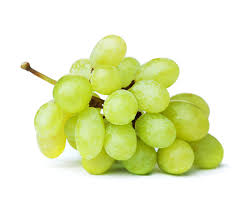Stamp: 39th Stamp Day - Grape and lake Balaton (Hungary 1966)
39th Stamp Day - Grape and lake Balaton (Hungary 1966)
16 September (Hungary ) within release Stamp Day 1966 goes into circulation Stamp 39th Stamp Day - Grape and lake Balaton face value 2+0.50 Hungarian forint
| Stamp 39th Stamp Day - Grape and lake Balaton in catalogues | |
|---|---|
| Michel: | Mi: HU 2272B |
| Philatelia Hungarica Catalog: | PHu: HU 2321V |
Stamp is square format.
Also in the issue Stamp Day 1966:
- Souvenir Sheet - 39th Stamp Day face value 8+2;
- Stamp - 39th Stamp Day - Grape and lake Balaton face value 2+0.50;
- Stamp - 39th Stamp Day - Poppies and Diósgyőr Castle face value 2+0.50;
- Stamp - 39th Stamp Day - Woman archer face value 2+0.50;
- Stamp - Russian Space Dogs (Canis lupus familiaris) face value 2+0.50;
Stamp 39th Stamp Day - Grape and lake Balaton it reflects the thematic directions:
In botany, a fruit is the seed-bearing structure in flowering plants (also known as angiosperms) formed from the ovary after flowering. Fruits are the means by which angiosperms disseminate seeds. Edible fruits, in particular, have propagated with the movements of humans and animals in a symbiotic relationship as a means for seed dispersal and nutrition; in fact, humans and many animals have become dependent on fruits as a source of food. Accordingly, fruits account for a substantial fraction of the world's agricultural output, and some (such as the apple and the pomegranate) have acquired extensive cultural and symbolic meanings. In common language usage, "fruit" normally means the fleshy seed-associated structures of a plant that are sweet or sour, and edible in the raw state, such as apples, bananas, grapes, lemons, oranges, and strawberries. On the other hand, in botanical usage, "fruit" includes many structures that are not commonly called "fruits", such as bean pods, corn kernels, tomatoes, and wheat grains. The section of a fungus that produces spores is also called a fruiting body.
A grape is a fruit, botanically a berry, of the deciduous woody vines of the flowering plant genus Vitis. Grapes are a non-climacteric type of fruit, generally occurring in clusters.
A lake is a naturally occurring, relatively large and fixed body of water on the Earth's surface. It is localized in a basin or interconnected basins surrounded by dry land. Lakes lie completely on land and are separate from the ocean, although they may be connected with the ocean by rivers, such as Lake Ontario. Most lakes are freshwater and account for almost all the world's surface freshwater, but some are salt lakes with salinities even higher than that of seawater. Lakes vary significantly in surface area and volume.
Philately (/fɪˈlætəli/; fih-LAT-ə-lee) is the study of postage stamps and postal history. It also refers to the collection and appreciation of stamps and other philatelic products.While closely associated with stamp collecting and the study of postage, it is possible to be a philatelist without owning any stamps. For instance, the stamps being studied may be very rare or reside only in museums.
Flora is the plant life occurring in a particular region or time, generally the naturally occurring or indigenous—native plant life. The corresponding term for animal life is fauna. Flora, fauna and other forms of life such as fungi are collectively referred to as biota. Sometimes bacteria and fungi are also referred to as flora, as in the terms gut flora or skin flora.




